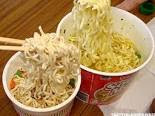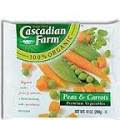 |
| Watch your salt consumption but don't forget about iodine. Follow Foods For Long Life on Facebook and Pinterest. |
The New Guidelines and Their Effect on Health
 |
| There is 2,325 mg of sodium in one teaspoon of salt. |
The 2015-2020 Dietary Guidelines for Americans advise people to consume less than 2,300 mg (~ 1 teaspoon) of sodium per day yet the average consumption is closer to 3,400 mg (~1 1/2 teaspoons) per day.
Too much sodium is one of the factors that can lead to high blood pressure, the leading cause of heart disease and stroke. Heart disease is the number one leading cause of death and stroke is the fifth leading cause of death in the U.S. One in three Americans have high blood pressure. If most of the salt people eat is from the prepared foods they buy, then the food industry is certainly a key contributor to people suffering these deadly diseases.
The proposed guidelines, which are open for public comment for up to five months (and probably for lobbyists of the food industry to rewrite) set targets for gradually reducing the amount of sodium in most processed and prepared foods in two phases. Based on these targets, it is expected that the average consumption of sodium would be reduced to 2,300 mg in 10 years. These guidelines are are voluntary, not mandatory.
According to an editorial written by Dr. Frieden in the Journal of the American Medical Association, if the consumption of sodium was reduced by as little as 400 mg per day, 32,000 heart attacks and 20,000 strokes could be prevented annually!
* * *
Where Salt Hides
 |
| 1 teaspoon of baking soda has 1,231 mg of sodium. |
Canned Soups - Veggie, chicken, and beef bouillon cubes are very high in sodium so when you use them to prepare your soups, make sure you lighten up on additional salt and take into account the amount the bouillon cube is already contributing. Look for bouillon cubes that say, "No Salt Added." One packet of onion soup mix has over 3,000 mg of salt. Old fashioned Campbell's Tomato Rice Soup has 770 mg of sodium per serving but the catch is that a "serving" is 1/2 cup. Who eats 1/2 cup of soup?
So when buying canned soup, read the label and look for the low salt versions.
Who didn't live on Ramen Noodle Soup in college. One package of chicken-flavored ramen noodle soup contains 1,760 mg of sodium, 76% of your daily requirement.
 |
| 1 packet of ramen noodles has 3/4 teaspoon of sodium. |
Soy Sauce and Miso are high in sodium. Have you ever noticed that you gain at least one or two pounds of water weight after eating Chinese food? A single tablespoon of soy sauce has over 1,000 mg of sodium and a tablespoon of miso contains 600 mg.
Prepared Salad Dressing is another food where reading the label is key. It's also a good reason to make your own. I find that adding crushed raw garlic and some cayenne or black pepper to the dressing gives it enough flavor that you don't notice reducing the amount of salt.
Cured Meats and Fish by nature of the curing process contain lots of sodium. Three ounces of Genoa salami contains over 1,500 mg of sodium and a three ounce serving of smoked salmon (lox) contains 1,700 mg.
Cheeses such as Roquefort (507 mg per ounce), shredded parmesan (475 mg per ounce), Swiss cheese (435 mg per ounce) and other cheeses will quickly get you to your daily limit.
 |
Canned Vegetables - Frozen vegetables are always a better choice than canned. Frozen veggies have no added salt whereas canned ones can have a very high amount. Green Giant canned sweet peas contain 400 mg per 1/2 cup serving whereas a 1/2 cup serving of Cascadian Farm Organic frozen peas has a little over 70 mg. That's 6 times the salt in a can versus frozen!
 |
| Frozen veggies are always a better selection than canned and contain much less sodium. |
* * *
Iodine - A Conundrum
While most people exceed their daily requirement of salt, many people in the U.S. are at risk for iodine deficiency. Iodine is key in the production of thyroid hormones which could lead to depression, weight gain, and more. It's also critical during pregnancy. A deficiency during pregnancy can lead to miscarriage or children with lower IQ scores and potentially ADHD.
The RDA for iodine is 150 micrograms per day for men and women, 220 micrograms for pregnant women, and 290 micrograms for women who are breastfeeding.
Iodine deficiency was very common up until the early 1900's when most western countries added iodine to salt to prevent this issue. But many of the popular gourmet salts such as sea salts, flaky Maldon salt from England, flour de sel from France, and other fancy salts are not a significant source of iodine.
So two major things are happening that can increase your risk of iodine deficiency. One, the goal of reducing salt in the diet. And two, the fact that many people are no longer eating iodized salt. Most prepared foods, like baked items, etc., are not made with iodized salt.
Signs of iodine deficiency are:
Dry skin,
Poor memory
Foggy, slow thinking
Weak and cramping muscles
Cold intolerance
Hoarse voice
Puffy eyes
Constipation
Eventually, an enlarge thyroid or goiter
Other sources of iodine, besides iodized salt, are seaweed (kelp has the highest content), shellfish, fish, cow's milk, and eggs. Vegans are at greater risk for iodine deficiency since they avoid most of these sources.
* * *
The RDA for iodine is 150 micrograms per day for men and women, 220 micrograms for pregnant women, and 290 micrograms for women who are breastfeeding.
Iodine deficiency was very common up until the early 1900's when most western countries added iodine to salt to prevent this issue. But many of the popular gourmet salts such as sea salts, flaky Maldon salt from England, flour de sel from France, and other fancy salts are not a significant source of iodine.
So two major things are happening that can increase your risk of iodine deficiency. One, the goal of reducing salt in the diet. And two, the fact that many people are no longer eating iodized salt. Most prepared foods, like baked items, etc., are not made with iodized salt.
Signs of iodine deficiency are:
Dry skin,
Poor memory
Foggy, slow thinking
Weak and cramping muscles
Cold intolerance
Hoarse voice
Puffy eyes
Constipation
Eventually, an enlarge thyroid or goiter
Other sources of iodine, besides iodized salt, are seaweed (kelp has the highest content), shellfish, fish, cow's milk, and eggs. Vegans are at greater risk for iodine deficiency since they avoid most of these sources.
* * *
Summary
I mentioned that 70% of the sodium people consume is already in the food before it reaches the table. To prevent the over consumption of salt you can either wait until the food industry voluntarily lowers the amount of salt they use over the next 10 years or do this:
* Eat less prepared foods, like canned soups, salad dressing, pancake mixes, etc. and make your own.
* Buy more fresh or frozen vegetables versus canned foods.
* ALWAYS read labels.
* When eating in a restaurant, ask for "less sodium". It's a common request and they most likely will know how to handle it.
* Don't forget about iodine! If you buy salt, make sure it's iodized. Also add some sea vegetables to your diet.
* Use spices and herbs to flavor foods instead of salt.
 |
| This product contains kelp (for iodine) and 24 herbs and spices for low-sodium diets |
